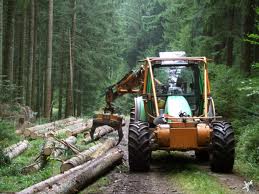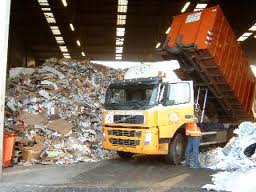
Biomass has a fundamental problem for use in the energy sector. There is not enough of it, and it is too expensive. Fossil industry emits 35 Gton CO2 around the globe each year. Agriculture captures 7 Gton CO2 per year. Therefore, agricultural production will never be able to cover the energy market. Other figures show the same result. On land, agricultural biomass amounts to 70 Gton; for the energy sector we would need 190 Gton. Wood and energy crops are not a viable solution for the energy problem.
The winner needs to be very efficient
Other technologies which can harvest energy and materials from the land include solar cells (PV), solar fuels (artificial photosynthesis), and wind power. In the long run, their process efficiency (the amount of product per unit of irradiated sunlight) will decide which technology will be the winner in this competition. That will not be biomass, as its direct competitors PV and solar fuels have an efficiency at least ten times as high per unit of land. In other words: energy from biomass will always remain a side product of food and materials chains.
This is aptly demonstrated by recent studies on large scale biogas production from energy crops in the Ukraine. The Ukraine has favourable conditions like a lot of land and relatively cheap labour. The question to be researched was whether this biogas would be able to compete with Russian natural gas. But it did not even come close: biogas production costs amount to 55 € ct/m3, and in addition to that there would be transport costs. Conclusion: energy farms are an illusion.

The paper market is locked in
Then, why do we burn Canadian wood chips in European coal fired power stations? That is because of the lock-in on the paper market. In the past, large areas were devoted to planting production woods, in Canada and elsewhere, for the paper industry. But the paper market does not grow any more. Therefore these woods are in need of finding a market. They find their way into the energy market. On top of that, European regulation prohibits the use of recycled paper for energy production. Paper recycling has become very efficient indeed, and that is why there is a glut on the market now (paper always needs to have a certain amount of new fibres, and therefore we cannot reuse all recycled paper). That is why we export recycled paper to China on the one hand, and import Canadian wood chips for power production on the other.
Regulation keeps down the price of recycled paper. But new markets develop which are not prohibited by law. BioMCN in Delfzijl (the Netherlands) constructs a factory for biomass gasification, and processing the resulting ‘syngas’ to many green products. Would this plant be allowed to use recycled paper?
Indigenous branchwood and smallwood
Energy forests an illusion? Then, what about the new market for Western European wood: the heat market (see our interview with Zwier van Olst)? For instance, calculations show that from € 40 per ton onwards, all branchwood and smallwood can be recovered from Dutch forests. Proper maintenance has been neglected for a long time, and for many years therefore, forest owners can harvest an extra ½ million tons extra of branchwood and smallwood from Dutch woods, on top of the level of sustainable maintenance. Which will carry a corresponding amount of green employment.

In the Netherlands, all stakeholders including forest owners and electricity companies owning coal fired power stations, have signed an MOU on wood. This MOU stipulates that all branchwood and smallwood harvested will be put to economic use. This amounts to finding a useful application for the bottom of the market, of which straight trunks (roundwood) form the top. It came as a surprise that as a consequence of this MOU, stakeholders had to redesign the whole production chain. It had been optimized for roundwood production. But now they are able to apply sustainable forestry to the entire production chain, which might lead to better overall performance.
No energy forests
Indigenous branchwood and smallwood proves to be competitive on the heat market (e.g. in district heating), where competitors are natural gas or domestic heating oil at retail prices. But is not competitive on the electricity market, where the competitor would be coal. And this is not likely to change, there are no major innovations in the pipeline. Deployment of wood in electricity production, as an additive to coal, will therefore remain dependent on subsidies. This application will disappear if and when the subsidies would disappear.
Energy from biomass will therefore largely remain a side product. As branchwood and smallwood are side products of forestry. As straw is a side product of food production. And as biogas may be a side product from biochemicals and biomaterials production. But the application of biomass for energy as the main product – that will remain an exception. And therefore, if market distorting elements like subsidies and an overregulated paper market would disappear, energy forests are an illusion.
